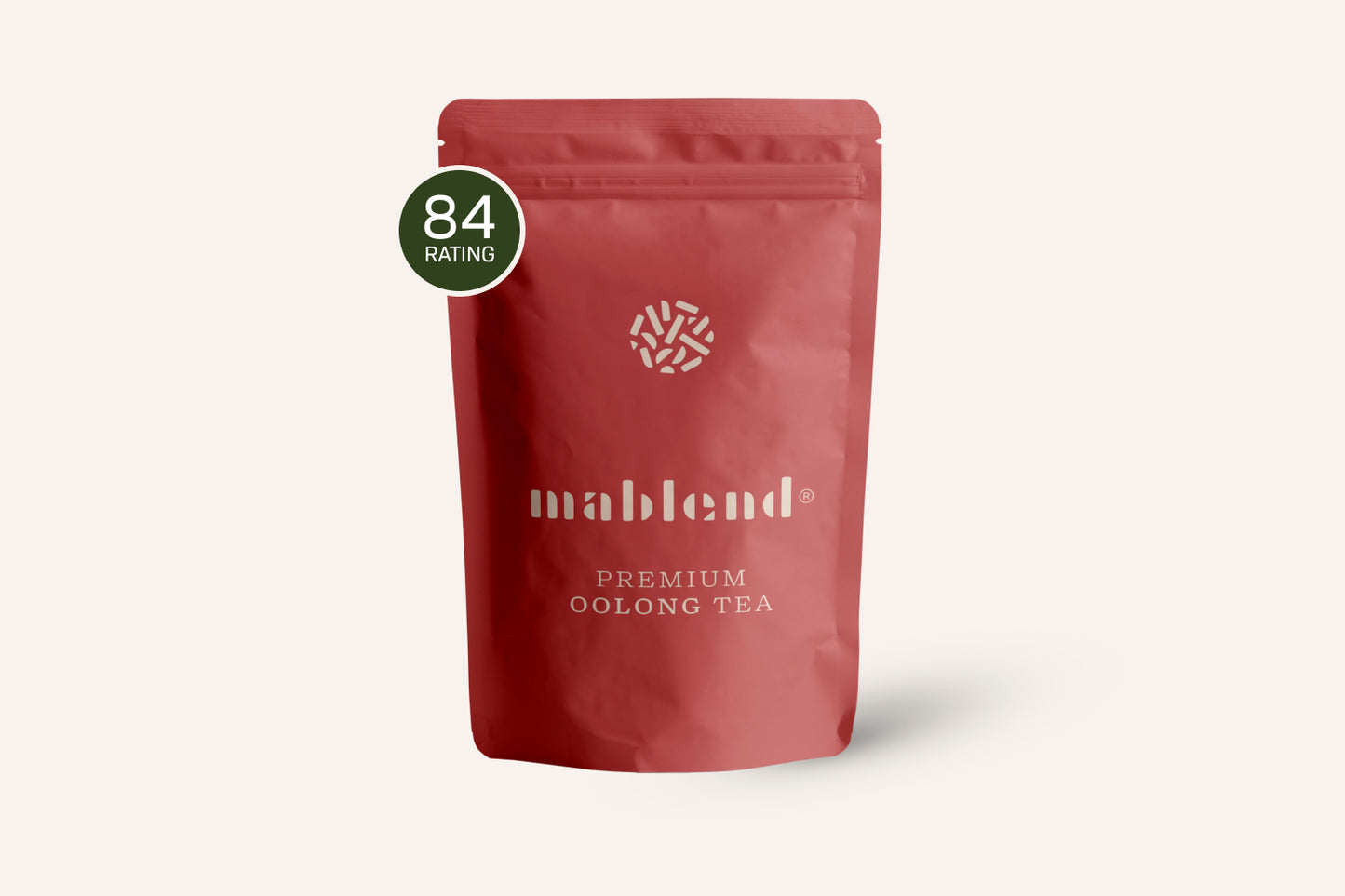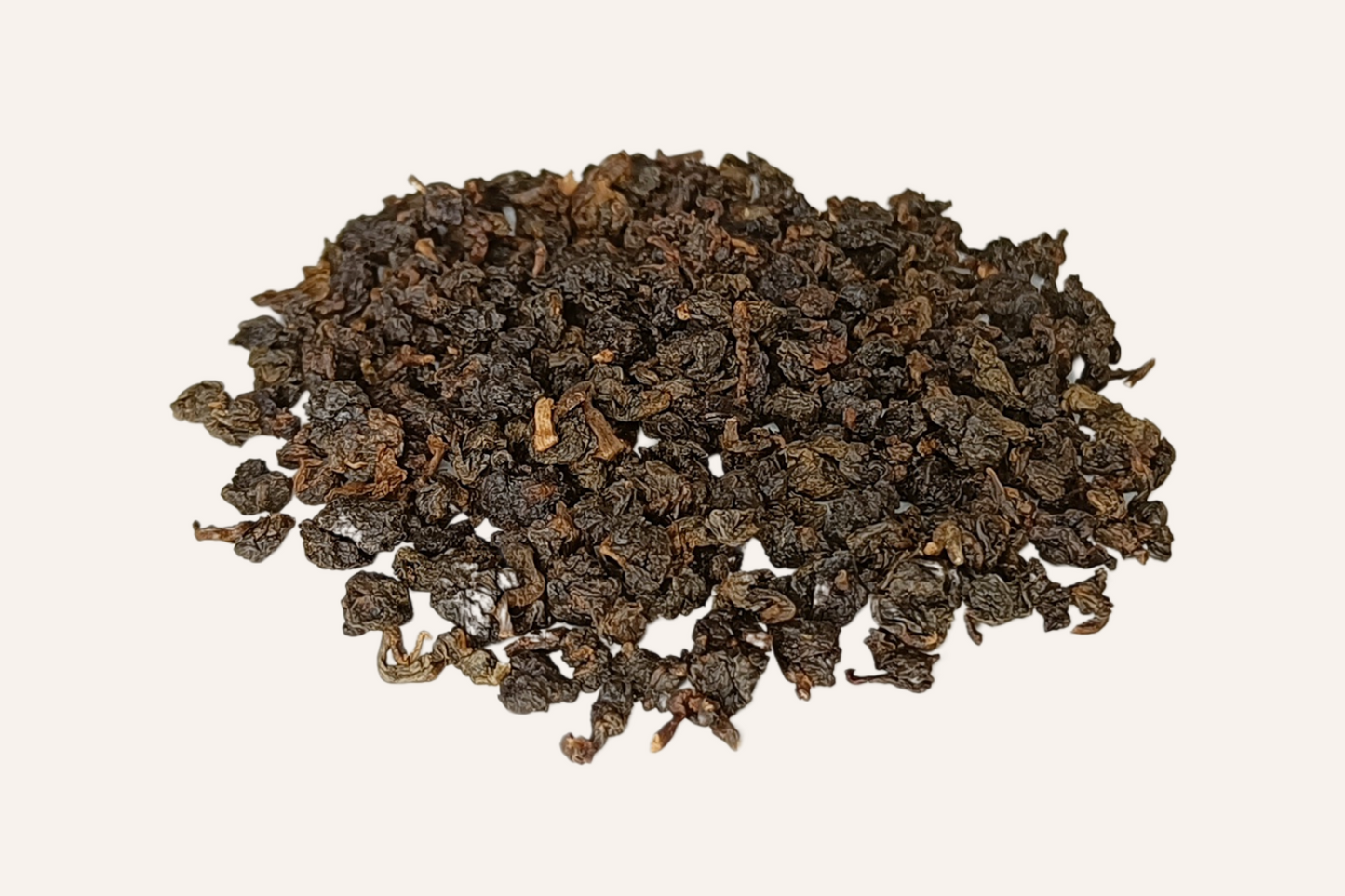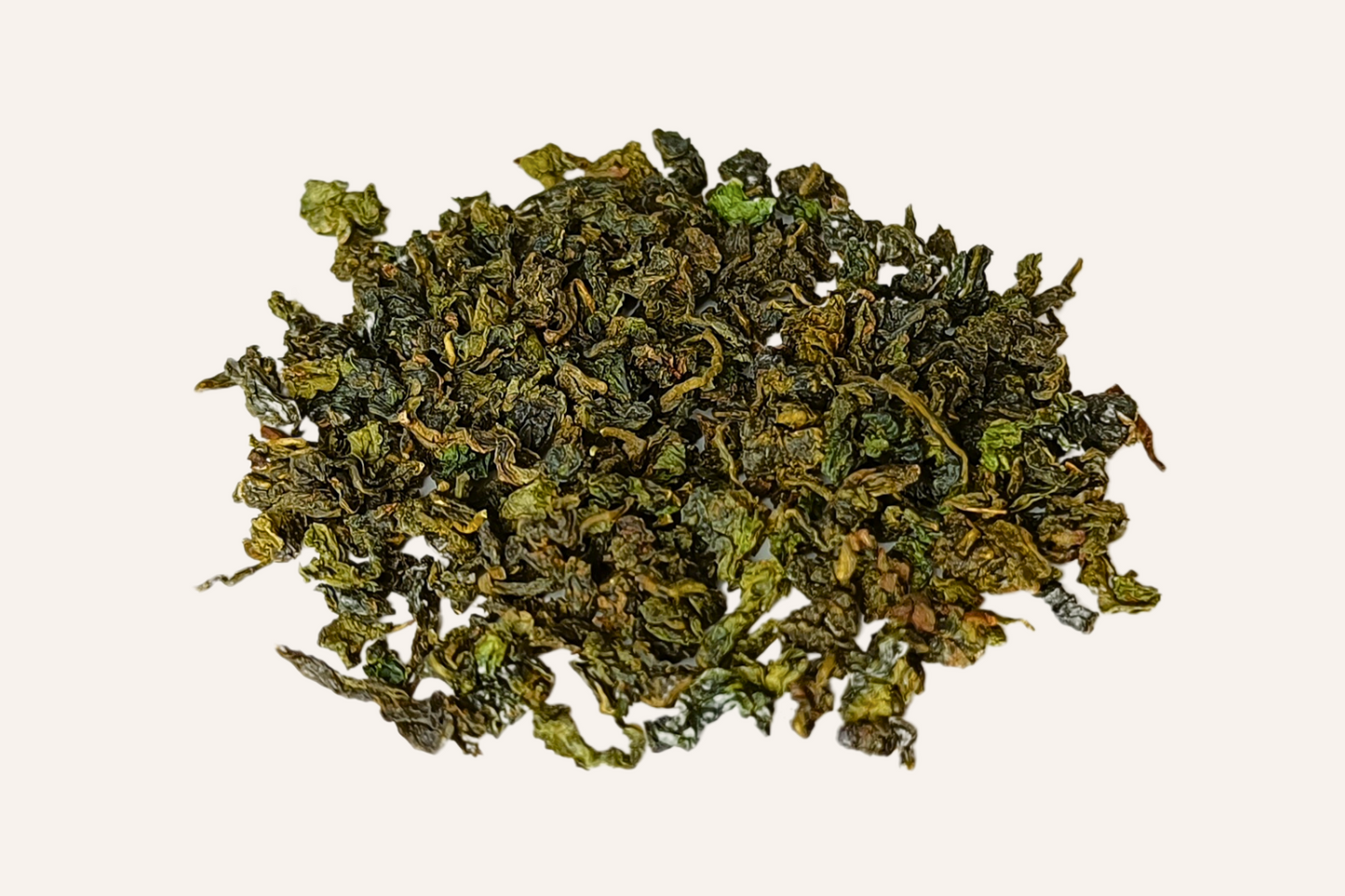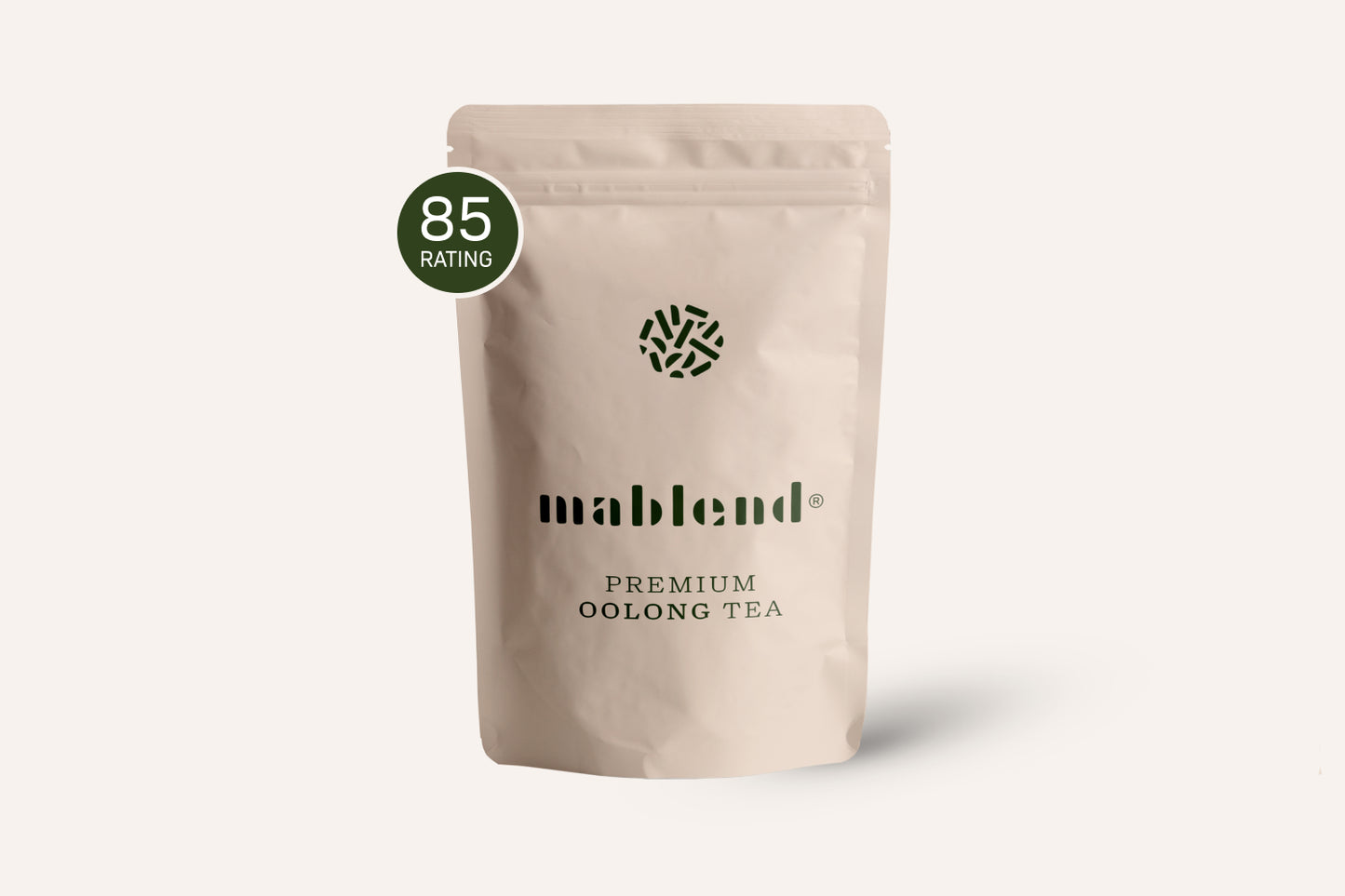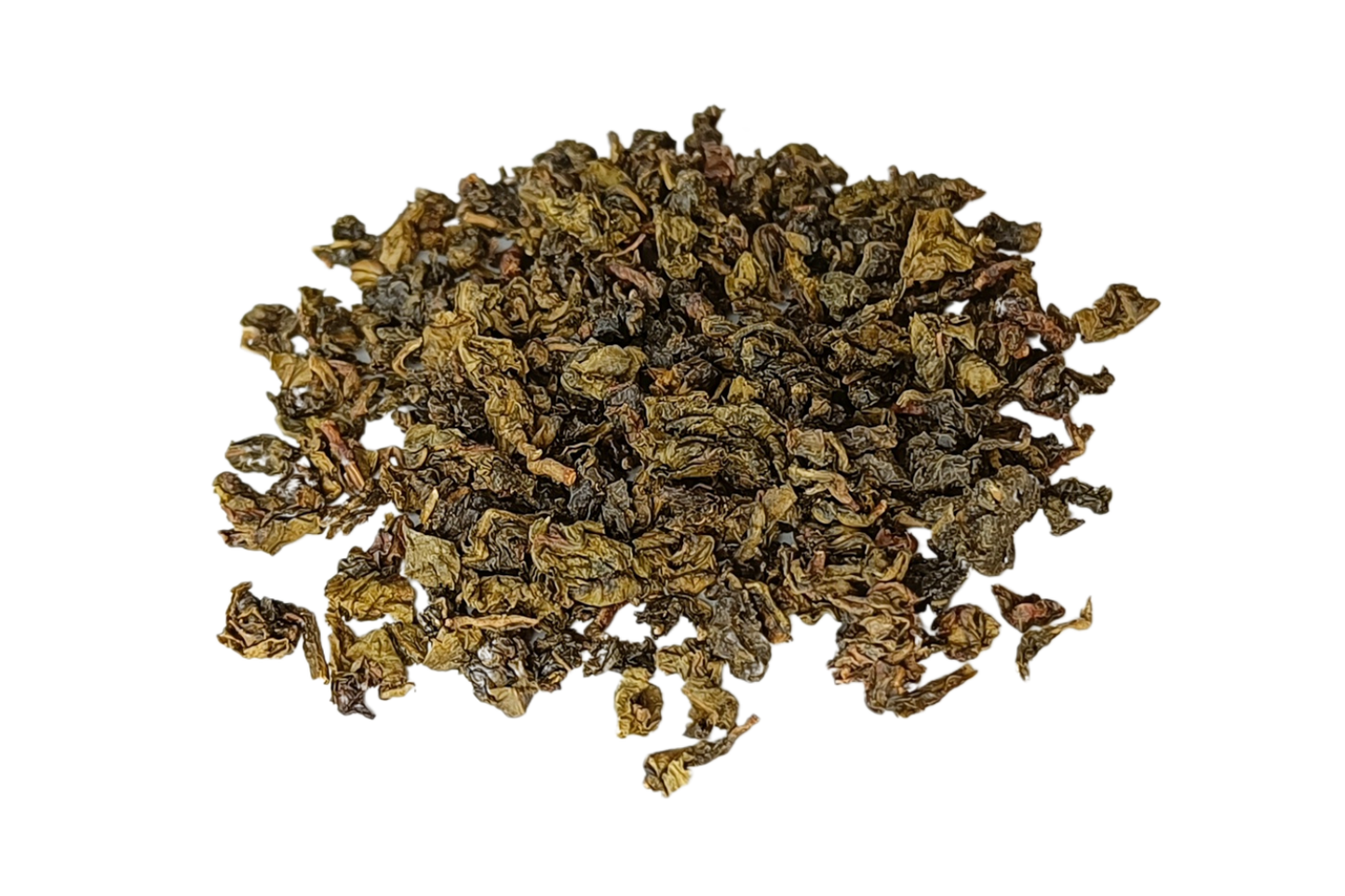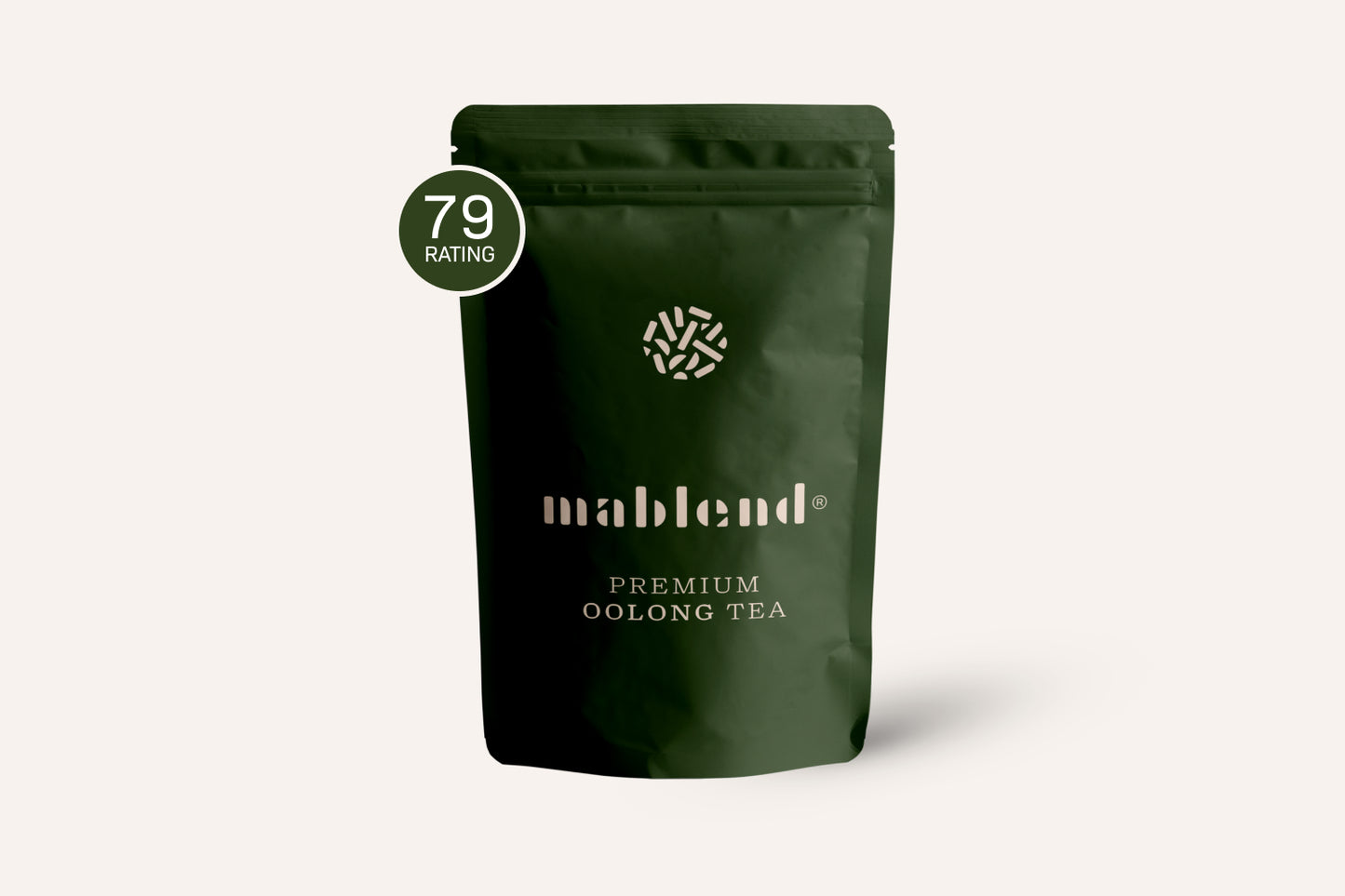Pu-erh tea is a unique fermented tea that originates from the Yunnan province of China. Unlike other teas, such as green or black tea, pu-erh undergoes a special fermentation process that gives it its distinctive taste and color.

The tea is often pressed into disc-shaped cakes or stones, but is also available in loose leaf form. The fermentation process allows pu-erh tea, like wine, to mature over time and change its flavor profile.
Origin and History of Pu-Er Tea
Deep in Yunnan Province, China, lies the city of Pu'er, the birthplace of the tea of the same name. This special tea has a rich history dating back to more than 1,700 years ago. The Qingmao tea bush, from which Pu-Er tea is extracted, is not just any tea bush. It is one of the oldest forms of the tea plant and grows larger than the regular Camellia Sinensis plant. This unique shrub is closely related to teas from India.

In the early days of tea in China, Pu-Er tea was mainly pressed into blocks. This was not only a way to preserve the tea, but also to facilitate transportation. These tea blocks were a common medium of exchange on the ancient tea routes that ran through Asia.
An interesting aspect of Pu-Er tea is the ripening process. Unlike other teas, which are usually consumed fresh, Pu-Er tea undergoes a fermentation process. This gives the tea its characteristic dark red color and strong, earthy taste. In the 1960s, a method was developed to artificially speed up this process, making the tea drinkable in just a few months. Today, both methods are used side by side, resulting in both raw and mature boiled treated tea.
The Taste of Pu-Er Tea
Pu-Er tea is known for its unique and complex flavor profile. In contrast to the light and fresh flavors of green or white tea, Pu-Er has a deep, earthy and often woody taste. The taste may vary depending on the age, type (raw or ripe) and processing method of the tea.
- Young, raw Pu-Er : This tea has a lively, slightly bitter taste with a sweet aftertaste. It may also have notes of green grass or hay.
- Old, raw Pu-Er : As the tea ages, the flavor becomes milder and richer notes of dried fruit, tobacco and sometimes even leather develop.
- Mature Pu-Er : This tea, which has undergone an accelerated fermentation process, has a deep, rich and earthy flavor. It can also have notes of chocolate, moss and wet earth.
It is also worth noting that the flavor of Pu-Er tea can develop further with each successive infusion, making the tea experience particularly captivating.
Different Types and Forms of Pu-Er Tea
Pu-Er tea comes in a variety of forms and types, each with its own unique characteristics :
Forms
- Cake : This is the most common form of Pu-Er tea. It is a round, flat disk of pressed tea.
- Brick : A rectangular shape of pressed tea.
- Tuo Cha : Small, bowl-shaped pieces of pressed tea, ideal for a single serving.
- Loose Leaf : Pu-Er tea that has not been pressed and is sold in its loose leaf form.
Species
- Raw (Sheng) Pu-Er : This is the traditional form of Pu-Er tea that naturally ferments over time.
- Mature (Shou) Pu-Er : This tea has undergone an accelerated fermentation process to mimic the taste of older fermented tea.

Choosing a particular form or type of Pu-Er tea depends on personal preference and how one plans to consume the tea. For example, some tea lovers prefer the deep, rich flavors of ripe Pu-Er, while others appreciate the complexity and evolving flavors of raw Pu-Er.
How is pu-erh made?
The production process of Pu'er tea is unique and different from other types of tea. Here are the most important steps:
- Picking : Only the top leaves and buds are picked by hand. The quality of the tea starts with the selection of the best leaves.
- Wilting : After picking, the leaves are spread out to wilt, which means they are partially dried. This process softens the leaves and prepares them for further processing.
- Heating : The leaves are briefly heated, usually by steaming them. This stops the natural oxidation process and preserves the green color of the leaves.
- Rolling : The leaves are then rolled to break the cell walls and release the juices. This helps start the fermentation process.
- Sunning : The rolled leaves are placed in the sun to dry further. This process helps develop the flavor of the tea.
- Fermentation : For raw Pu'er (Sheng), the tea is fermented naturally over a longer period of time. An accelerated fermentation method is used for aged Pu'er (Shou).
- Maturation : After fermentation, the tea is pressed into various shapes and stored for maturation. The tea can mature for years, and during this process the flavor constantly changes.

Pu-Erh Tea Side Effects (Caffeine)
Pu-erh tea, like all teas, contains caffeine. While caffeine in moderate amounts can have benefits such as increasing alertness and improving concentration, excessive consumption can lead to side effects such as insomnia, headaches, fast heart rate, and more.
Caffeine content comparison :
- Green tea : A cup of green tea usually contains between 20 and 45 mg of caffeine. The exact amount may vary depending on the preparation method and the type of tea leaves.
- Pu-erh tea : The caffeine content in pu-erh tea is generally between 30 and 70 mg per cup. The amount may vary depending on factors such as the age of the tea and the method of preparation.
- Coffee : A standard cup of coffee has a caffeine content that varies between 95 and 200 mg, depending on the preparation method and the type of coffee beans.
By comparison, coffee clearly has the highest caffeine content of the three, while green tea has the lowest. Pu-erh tea is somewhere in between, but it is still significantly lower than coffee.
Is Pu'er tea healthy?
Pu'er tea has been consumed in China for centuries and is known for its potential health benefits. Here are some of the most commonly mentioned benefits:
- Digestive support : Pu'er tea is often drunk after heavy meals because it can aid digestion and reduce stomach upset ( source ).
- Weight loss : There is some evidence that Pu'er tea may help burn fat and reduce body weight, thanks to the presence of catechins and other antioxidants ( source ).
- Health benefits: Scientific research suggests that oolong tea and pu-er tea may provide certain health benefits, such as reducing cholesterol ( source ).

Making Pu'er Tea
Brewing Pu'er tea is an art in itself and can vary depending on personal preference. Here are some general steps to get you started:
- Water : Use fresh, cold water and bring it to a boil. Then let the water cool for a minute before pouring it over the tea.
- Tea : Use approximately 5 grams of Pu'er tea for every 250 ml of water. If you have a tea cake, break off a piece with a tea knife.
- Pre-soaking : Pour a small amount of hot water over the tea leaves to rinse them. Pour this water away after a few seconds.
- Steeping : Pour hot water over the tea leaves and let them steep. For raw (sheng) Pu'er tea, steep for 3-5 minutes. For aged (shou) Pu'er tea, steep for 2-4 minutes.
- To serve : Pour the tea into cups and enjoy. Pu'er tea can be poured several times, with each pour revealing a slightly different flavor and aroma.
Assessing the quality of Pu'er tea
The quality of Pu'er tea can be determined by inspecting the dried leaves, the tea infusion and the tea leaves used. However, the true quality of a specific batch of pu'erh is only revealed when the tea is brewed and tasted. There are some general indicators of quality:
- Dried tea: There should be no twigs, foreign matter or mold spots on the surface of the compressed pu'erh. The leaves should ideally be whole, visually distinctive and not muddy in appearance. Good tea should also be dry and fragrant.
- Tea infusion: The infusion of both raw and ripe pu'erh should never be cloudy. Well-aged raw pu'erh and well-made mature pu'erh may produce a dark red infusion, but it should not be opaque or black in color. The flavors of pu'erh infusions should last and be revealed during individual or successive infusions.
- Young raw pu'erh: The ideal infusions should be aromatic with light but distinct scents of camphor, rich spicy notes, floral notes and hints of dried fruit. Young raw pu'erh can sometimes be bitter and astringent, but should also have a pleasant mouthfeel and a "sweet" aftertaste.
- Aged raw pu'erh: Aged pu'erh should never smell stale or strongly moldy. The taste of aged raw pu'erh or ripe pu'erh should be smooth, with slight hints of bitterness and should not have sharp astringency or sour flavors.
- Used Tea Leaves: Whole leaves and leaf bud systems should be clearly visible in the used tea. The leaves should not crumble when rubbed and with aged pu'erh they should not resemble compost.

